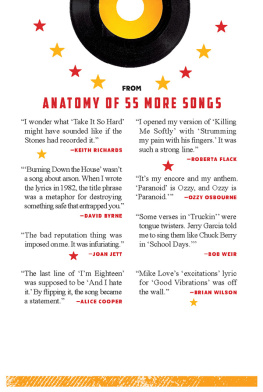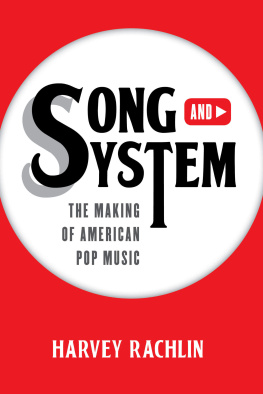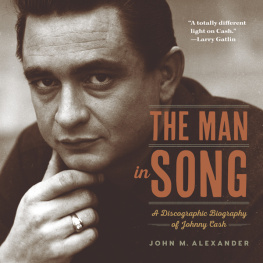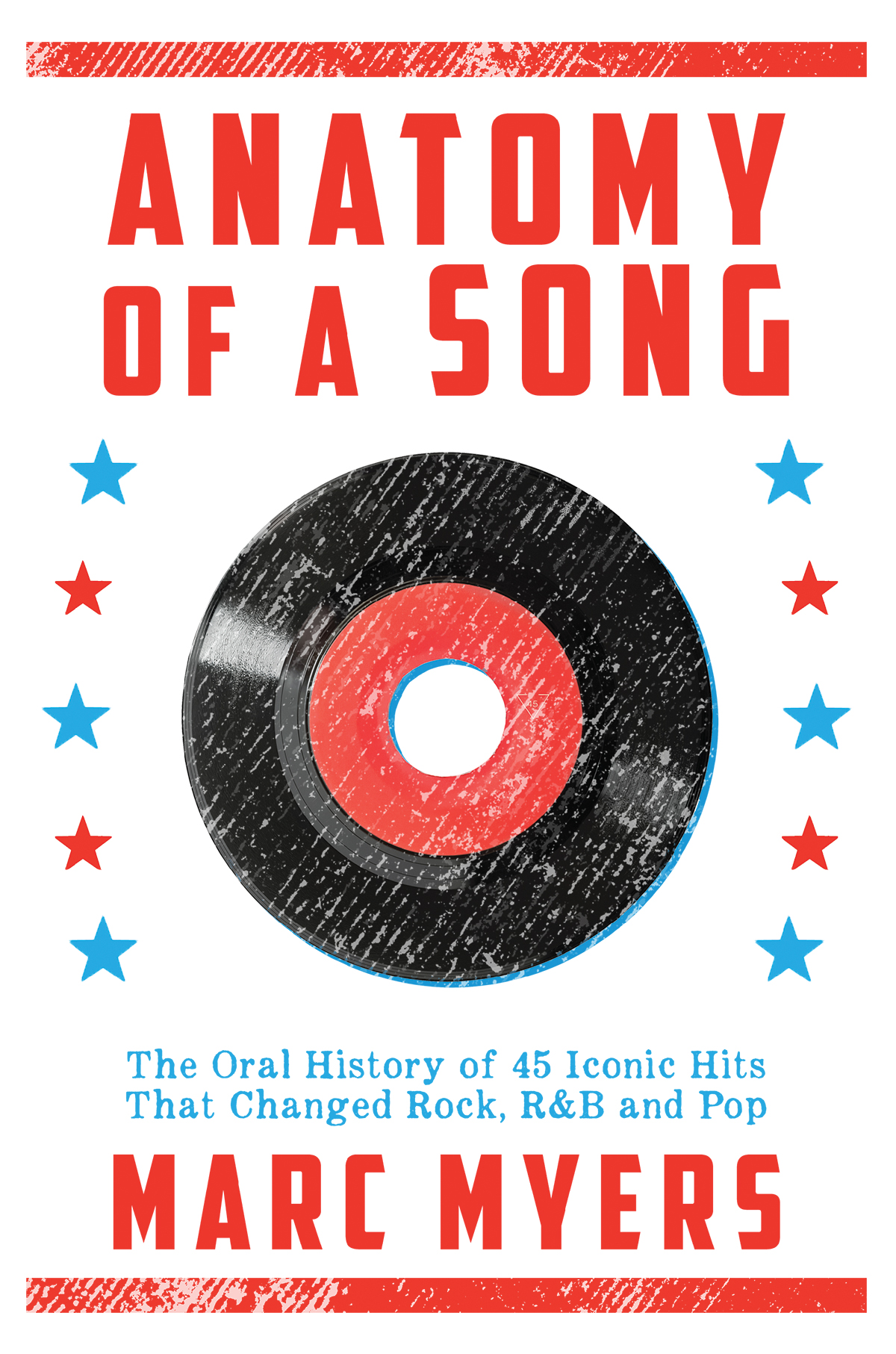Anatomy of a Song
Also by Marc Myers
Why Jazz Happened
Anatomy of a Song
The Oral History of 45 Iconic Hits
That Changed Rock, R&B and Pop
Marc Myers

Grove Press
New York
Copyright 2016 by Marc Myers
Jacket and art design by Michael Patrick Dudding
All photos printed throughout the text courtesy of Getty Images, with the following exceptions: p. 8 (Lloyd Price): Courtesy of Lloyd Price. p. 16 (Little Willie Littlefield): Gusto Records. p. 34 (Dion DiMucci): Susan DiMucci. p. 40 (The Dixie Cups):
Alan Betrock / Shake Books, Courtesy of Wayne Betrock. p. 66 (The Four Tops): Pictorial Press Ltd / Alamy. p. 92 (Grace Slick): Courtesy of Herb Greene. p. 119 (Loretta Lynn): Loretta Lynn Enterprises Inc. p. 126 (Tammy Wynette): Courtesy of Cathy Sherrill Lale. p. 154 (Elvis Presley): Joseph A. Tunzi / JAT Publishing / Daryl Restly. p. 176 (Mick Jagger), p. 294 (Merle Haggard): Photographs by Norman Seeff. p. 184 (Rod Stewart): John McKenzie, London. p. 201 (Joni Mitchell): Courtesy of Cary Raditz. p. 222 (The Allman Brothers): Photo by Twiggs Lyndon / Courtesy of the Lyndon Family. p. 244 (Stevie Wonder): Courtesy Johnson Publishing Company, LLC. p. 286 (The Neville Brothers): Christopher R. Harris. p. 308 (Bonnie Raitt): Courtesy Everett Collection.
All rights reserved. No part of this book may be reproduced in any form or by any electronic or mechanical means, including information storage and retrieval systems, without permission in writing from the publisher, except by a reviewer, who may quote brief passages in a review. Scanning, uploading, and electronic distribution of this book or the facilitation of such without the permission of the publisher is prohibited. Please purchase only authorized electronic editions, and do not participate in or encourage electronic piracy of copyrighted materials. Your support of the authors rights is appreciated. Any member of educational institutions wishing to photocopy part or all of the work for classroom use, or anthology, should send inquiries to Grove Atlantic, 154 West 14th Street, New York, NY 10011 or .
A version of each chapter first appeared in The Wall Street Journal as part of the column Anatomy of a Song, 20112016.
First Grove Atlantic hardcover edition: November 2016
Published simultaneously in Canada
Printed in the United States of America
ISBN 978-0-8021-2559-0
eISBN 978-0-8021-8965-3
Library of Congress Cataloging-in-Publication Data is available for this title.
Grove Press
an imprint of Grove Atlantic
154 West 14th Street
New York, NY10011
Distributed by Publishers Group West
groveatlantic.com
For Alyse and Olivia
My melody and harmony
Contents
Lloyd Price
Interviews: Lloyd Price, Dave Bartholomew, Art Rupe
Little Willie Littlefield
Interviews: Mike Stoller, Billy Davis, Alfred Pee Wee Ellis
The Isley Brothers
Interview: Ronald Isley
The Marvelettes
Interview: Katherine Kat Anderson Schaffner
Dion DiMucci
Interview: Dion DiMucci
The Dixie Cups
Interviews: Jeff Barry, Darlene Love, Mike Stoller, Barbara Hawkins, Rosa Hawkins, Artie Butler
The Kinks
Interviews: Ray Davies, Dave Davies, Shel Talmy
The Righteous Brothers
Interviews: Barry Mann, Cynthia Weil, Bill Medley
The Temptations
Interview: Smokey Robinson
The Four Tops
Interviews: Lamont Dozier, Abdul Duke Fakir, Paul Riser
John Sebastian
Interview: John Sebastian
The Doors
Interviews: Ray Manzarek, Robby Krieger, John Densmore
The Young Rascals
Interviews: Felix Cavaliere, Chris Huston, Gene Cornish
Jefferson Airplane
Interview: Grace Slick
The Stone Poneys
Interviews: Michael Nesmith, Linda Ronstadt, Bobby Kimmel, Don Randi
Otis Redding
Interviews: Steve Cropper, Booker T. Jones, Wayne Jackson, Ben Cauley
Loretta Lynn
Interview: Loretta Lynn
The Rolling Stones
Interview: Keith Richards
Tammy Wynette
Interviews: Billy Sherrill, Hargus Pig Robbins, Jerry Kennedy
Steppenwolf
Interviews: John Kay, Michael Monarch
Creedence Clearwater Revival
Interviews: John Fogerty, Sonny Charles, Tamiko Jones, Perry Botkin Jr., Brent Maher
The Edwin Hawkins Singers
Interviews: Edwin Hawkins, Dorothy Morrison
Elvis Presley
Interviews: Mark James, Chips Moman
Led Zeppelin
Interviews: Jimmy Page, George Chkiantz, Eddie Kramer
Janis Joplin
Interviews: John Byrne Cooke, Bob Neuwirth, Michael McClure, Clark Pierson, Brad Campbell
The Rolling Stones
Interview: Mick Jagger
Rod Stewart
Interview: Rod Stewart
Joni Mitchell
Interviews: Joni Mitchell, Cary Raditz
The Staple Singers
Interviews: Al Bell, Mavis Staples
Jimmy Cliff
Interviews: Jimmy Cliff, Jackie Jackson, Hux Brown
Gladys Knight and the Pips
Interviews: Jim Weatherly, Cissy Houston,Tony Camillo, Gladys Knight
The Allman Brothers
Interviews: Dickey Betts, Chuck Leavell, Les Dudek
The Hues Corporation
Interviews: Wally Holmes, John Florez, Joe Sample, H. Ann Kelley
Aerosmith
Interviews: Joe Perry, Steven Tyler
Stevie Wonder
Interview: Stevie Wonder
Steely Dan
Interviews: Donald Fagen, Walter Becker, Larry Carlton, Tom Scott, Pete Christlieb
Elvis Costello
Interview: Elvis Costello
Blondie
Interviews: Chris Stein, Debbie Harry, Michael Chapman
Pink Floyd
Interview: Roger Waters
The Clash
Interviews: Mick Jones, Paul Simonon, Topper Headon
The Neville Brothers
Interviews: Cyril Neville, Aaron Neville, Art Neville, Charles Neville, Barbara Hawkins, Mac Rebennack
Merle Haggard
Interview: Merle Haggard
Cyndi Lauper
Interviews: Rob Hyman, Cyndi Lauper
Bonnie Raitt
Interview: Bonnie Raitt
R.E.M.
Interviews: Peter Buck, Mike Mills, Michael Stipe, Bill Berry
Acknowledgments
On Friday, September 23, 2011, I was grabbing a late lunch with my wife on New Yorks Upper West Side when Rich Turner, The Wall Street Journal s music editor, e-mailed an idea for a fast turnaround: Were wondering about whether there are stories to be done about individual songs, an Anatomy of a Song, classic songs that resonate today and have backstories behind them, anecdotes surrounding them, huge histories of what happened to them after they came out. Theyre like people and we could profile them. To start, how about My Girl by Smokey Robinson?
And so began the newspapers Anatomy of a Song column and my ongoing odyssey to gather the dramatic stories behind the writing and recording of some of Americas most iconic rock, soul, country, R&B, gospel, reggae, and disco songs. Originally, the mandate was to treat the column as a write-throughan article on the song with the songwriters quotes spread throughout. But by the third column, on the Righteous Brothers Youve Lost That Lovin Feelin, I faced a problem. There were two accessible songwriters Cynthia Weil and Barry Manninstead of one. Thats when I realized the column would be better served as an oral history, with the stories told through my edit of the songwriters and artists own words. The new format would be flexible enough to include as many sources as were needed to tell the story, and would also allow me to capture the sound of a subjects voice.
When I proposed the new format idea to Rich and Eben Shapiro, The Wall Street Journal s global arts editor, in July 2012, they agreed, and it worked perfectly. In the years that followed, the three of us routinely batted around artist and song ideas, and the process has been wonderfully collaborative and fruitful. My heartfelt thanks to Eben and Rich for their initial vision and guidance and for giving me the opportunity to preserve music history. A special thanks to the Anatomy of a Song team over the past five yearsLisa Bannon, Emily Gitter (now editor of the Mansion section), Michael Boone, Brenda Cronin, Catherine Romano, and photo editor Ericka Burchett. I also want to thank Wall Street Journal senior deputy managing editor Michael W. Miller for his critical eye and support for the column.















